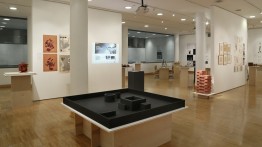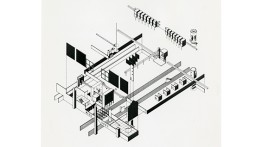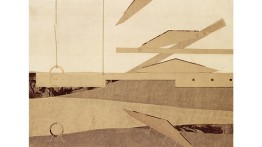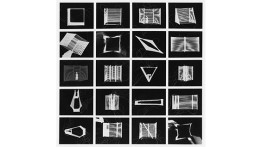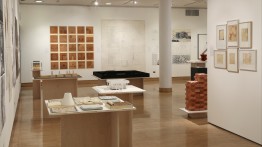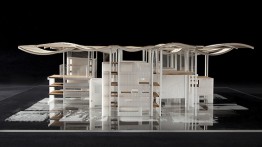Archive and Artifact: The Virtual and the Physical
Tue, Oct 23, 2018 2pm - Sat, Dec 1, 2018 7pm
This exhibition celebrates The Irwin S. Chanin School of Architecture's experimental and influential pedagogy by presenting undergraduate Thesis projects completed at the school over the past 50 years.
Curated from materials documented in the Student Work Collection of the school's Architecture Archive, the exhibition includes physical hand drawings, born-digital drawings, and models of 35 undergraduate Thesis projects completed between 1969 and 2018. These materials are complimented by an exclusive preview of the school's Digital Access Project, an online database of the Student Work Collection that expands the exhibition's scope. The database will allow visitors to access, via computer terminals in the gallery, over 500 Thesis projects completed between the mid-1960's through 2003, including nearly 8,500 digitized records.
The exhibition represents the culmination of students' five-year design studio sequence, portraying both an endpoint of a young architect's formative education and the platform from which the next generation of architectural leaders is launched. The projects exhibited in physical and virtual form include work by graduates of the school who have become prominent architects and educators, including Stan Allen (AR'81), Peggy Deamer (AR'77), Elizabeth Diller (AR'79), Evan Douglis (AR'83), Laurie Hawkinson (AR'83), Diane Lewis (AR'76), and Daniel Libeskind (AR'70), among others.
Projects completed under the School of Architecture's founding Dean John Q. Hejduk (1975-2000), will be included as well as works from the tenures of Anthony Vidler, former Dean (2001-2013) and current Professor of Architecture, and Dean Nader Tehrani (2015-present).
Generous support for Archive and Artifact: The Virtual and the Physical has been provided by the Graham Foundation for Advanced Studies in the Fine Arts, the Institute of Museum and Library Services, the Leon Levy Foundation, the Metropolitan New York Library Council, and the National Historic Publications and Records Commission.
This exhibition is presented in association with Archtober, Architecture and Design Month New York City, October 2018.
ABOUT ARCHTOBER
Archtober (ärk'tōbər) is New York City's Architecture and Design Month, an annual, month-long festival of architecture activities, programs, and exhibitions taking place during the month of October. Archtober presents special tours, lectures, films and exhibitions that focus on the importance of architecture and design in everyday life. The festival's many participating organizations aim to raise awareness of the important role of design in our city and to build a lasting civic and international recognition of the richness of New York's built environment.
Opening Reception
Tuesday, October 23 6:30pm
The Arthur A. Houghton Jr. Gallery
Gallery Hours
Tuesday-Friday 2-7pm
Saturday and Sunday 12-7pm
![]()
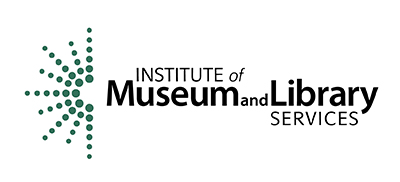
![]()
![]()
![]()
View the full Fall 2018 Lectures and Events List.
Located in the Arthur A. Houghton Jr. Gallery, 7 East 7th Street, 2nd Floor, between Third and Fourth Avenues

